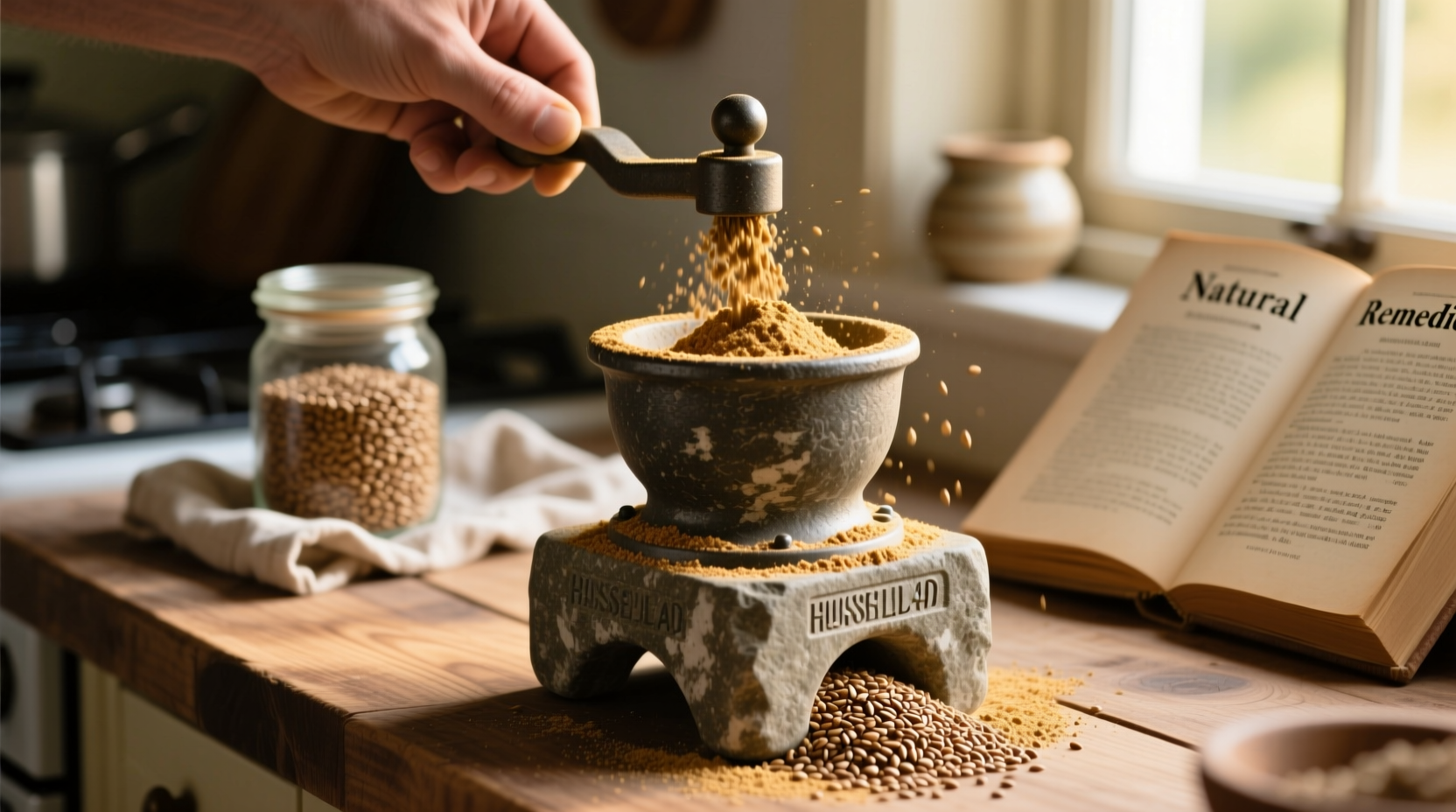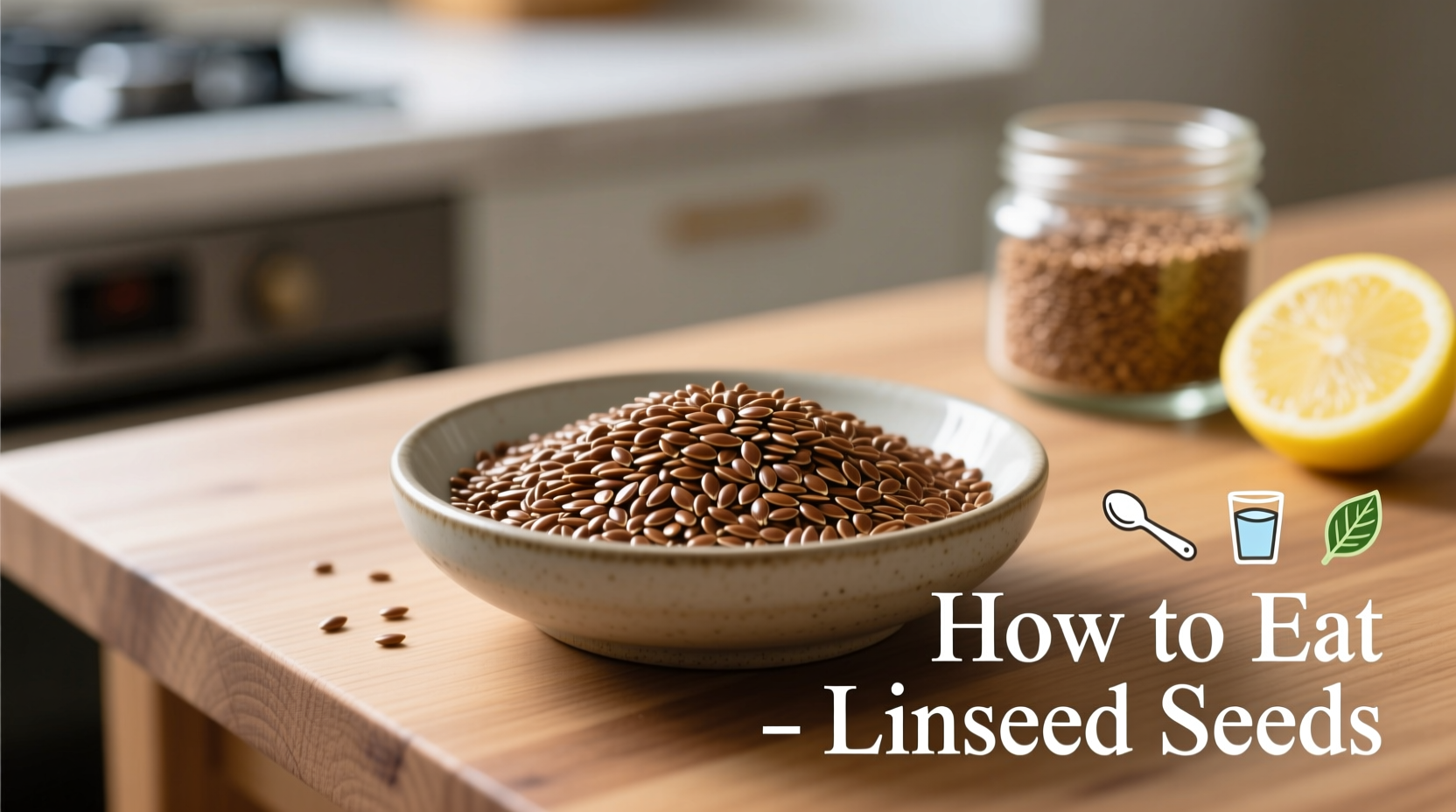The most effective way to eat linseed seeds (flaxseeds) is to grind them fresh and consume 1-2 tablespoons daily with adequate water. Whole linseeds often pass through your digestive system undigested, reducing their nutritional benefits. Ground linseeds provide better access to omega-3 fatty acids, fiber, and lignans that support heart health, digestion, and hormone balance.
Linseed seeds, commonly known as flaxseeds, are nutritional powerhouses packed with omega-3 fatty acids, fiber, and plant compounds called lignans. But simply eating them raw won't maximize their benefits. How you prepare and consume linseeds determines whether you actually absorb their valuable nutrients.
| Preparation Method | Nutrient Absorption | Digestive Impact | Recommended Daily Amount |
|---|---|---|---|
| Whole seeds | Low (seeds pass undigested) | Minimal benefit | Not recommended |
| Freshly ground | High (80-90% absorption) | Optimal fiber benefits | 1-2 tablespoons |
| Preground (store-bought) | Moderate (oxidizes quickly) | Good but less potent | 1-2 tablespoons |
| Soaked seeds | Moderate to high | Gentler on digestion | 2-3 tablespoons |
Why Proper Preparation Matters
Linseed seeds have a hard outer shell that your digestive system can't break down effectively. According to research published in the American Journal of Clinical Nutrition, whole flaxseeds often pass through the digestive tract intact, providing minimal nutritional benefit. When you grind linseeds, you break this protective shell, releasing the valuable omega-3 fatty acids, soluble fiber, and lignans that make them so beneficial.
The National Institutes of Health notes that ground flaxseed provides approximately 80-90% better absorption of alpha-linolenic acid (ALA), the plant-based omega-3 fatty acid that supports heart health. This scientific evidence confirms why preparation method directly impacts the health benefits you receive.

Your Step-by-Step Guide to Eating Linseed Seeds
Step 1: Choose Quality Seeds
Start with high-quality brown or golden linseeds. Both varieties offer similar nutritional profiles, though golden linseeds have a slightly milder flavor preferred by many beginners. The USDA FoodData Central confirms that both types contain comparable amounts of omega-3s, fiber, and protein.
Step 2: Grind for Maximum Benefit
Grinding is the critical step that transforms linseeds from indigestible seeds to nutritional powerhouses:
- Use a coffee grinder dedicated to seeds (not for coffee)
- Grind 2-4 tablespoons at a time for freshness
- Grind to a coarse meal texture - not powder
- Consume within 2-4 hours for optimal nutrient retention
Pre-ground flaxseed loses its nutritional potency quickly due to oxidation. A study from the Journal of Food Science found that ground flaxseed begins losing its omega-3 content within hours of grinding when exposed to air.
Step 3: Daily Consumption Guidelines
The appropriate amount depends on your health goals and digestive tolerance:
- Beginners: Start with 1 teaspoon daily, gradually increasing over 2-3 weeks
- Maintenance: 1-2 tablespoons of freshly ground linseed daily
- Therapeutic use: Up to 3 tablespoons daily (consult healthcare provider)
The Academy of Nutrition and Dietetics recommends consuming linseeds with plenty of water (at least 8 ounces per tablespoon) to prevent potential digestive discomfort. This hydration requirement is crucial because the soluble fiber in linseeds absorbs water as it moves through your digestive system.
Step 4: Incorporate Into Your Daily Routine
Here are practical ways to add linseeds to your diet without disrupting your routine:
Breakfast Boosters
- Mix into oatmeal or cereal after cooking
- Add to smoothies (1 tablespoon per serving)
- Sprinkle on yogurt with fresh fruit
- Stir into pancake or waffle batter
Lunch and Dinner Enhancers
- Use as egg substitute (1 tablespoon ground linseed + 3 tablespoons water = 1 egg)
- Add to salad dressings for thickness and nutrition
- Mix into meatloaf or burger patties
- Sprinkle on roasted vegetables before serving
Baking Applications
- Replace 15-20% of flour with ground linseed in bread recipes
- Add to muffin and cookie batters
- Create linseed crackers by mixing with water and baking
- Use as breading for fish or chicken
Avoid These Common Linseed Mistakes
Even with proper preparation, certain practices can diminish benefits or cause issues:
- Not drinking enough water - Can lead to constipation despite high fiber content
- Consuming excessive amounts - More than 3 tablespoons daily may cause digestive upset
- Using old or rancid ground linseed - Signs include bitter taste or musty smell
- Taking with certain medications - May interfere with absorption of some drugs
Special Considerations for Different Needs
For Digestive Health
If you have sensitive digestion, start with soaked linseeds rather than ground. Soak 1 tablespoon in 3-4 tablespoons of water for 2-4 hours until gel-like. This pre-digests the fiber, making it gentler on your system while still providing benefits.
For Heart Health
The American Heart Association recognizes flaxseed as beneficial for cardiovascular health. For optimal heart benefits, consume ground linseed consistently as part of a balanced diet. Research shows that regular consumption (1-2 tablespoons daily) can help reduce LDL cholesterol levels by 6-11% over 12 weeks.
For Hormone Balance
The lignans in linseeds act as phytoestrogens that may help balance hormones. Women experiencing menopausal symptoms might benefit from consistent daily consumption, though individual responses vary. Consult your healthcare provider if you have hormone-sensitive conditions.
Safety and Context Boundaries
While linseeds offer numerous benefits, certain individuals should exercise caution:
- Pregnant or breastfeeding women should consult healthcare providers before regular consumption
- Individuals with inflammatory bowel disease should start with very small amounts
- Those taking blood thinners should maintain consistent intake and consult their doctor
- People with kidney stones may want to limit consumption due to oxalate content
The European Food Safety Authority has established that up to 50 grams (about 3.5 tablespoons) of flaxseed daily is safe for most adults, but starting slowly is always recommended to assess individual tolerance.
Maximizing Your Linseed Experience
For best results, make linseed consumption a consistent part of your routine rather than occasional. Store whole seeds in an airtight container in the refrigerator to maintain freshness for up to 1 year. Only grind what you'll use within a few hours to prevent oxidation of delicate omega-3 fats.
Remember that linseeds work best as part of a varied, balanced diet - not as a miracle cure. Their benefits accumulate over time with regular consumption. Pair them with other fiber-rich foods and adequate hydration for optimal digestive health and nutrient absorption.











 浙公网安备
33010002000092号
浙公网安备
33010002000092号 浙B2-20120091-4
浙B2-20120091-4